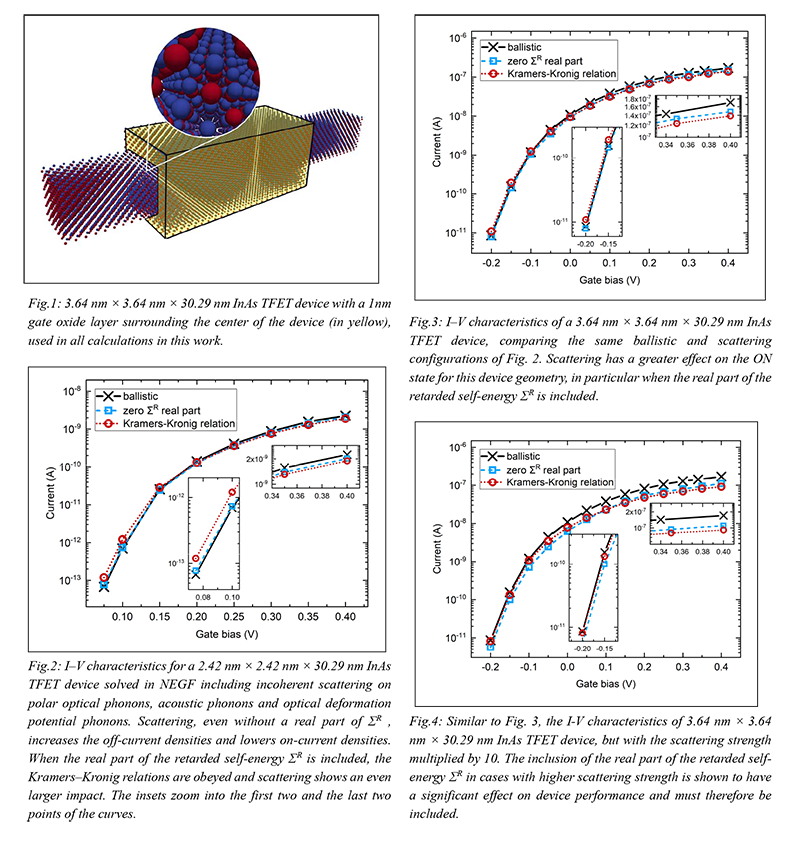IWCN 2021: How to Preserve the Kramers-Kronig Relation in Inelastic Atomistic Quantum Transport Calculations
Category
Published on
Abstract
The nonequilibrium Green’s function method (NEGF) is often used to predict quantum transport in atomically resolved nanodevices. This yields a high numerical load when inelastic scattering is included. Atomistic NEGF had been regularly applied on nanodevices, such as nanotransistors. However, incoherent scattering is still subject to significant approximation. A very common approximation to scattering is to neglect the real part of the retarded scattering self-energies, which fundamentally violates the causality relation. Neglecting that real part is known to alter electronic energies, which in turn impacts transistor I-V characteristics [1,2]. In this work, [3] the atomistic mode space approach of Mil’nikov et al. [4] is extended by including the exact calculation of the real part of retarded scattering self-energies in the reduced basis representation using the Kramers–Kronig relation. The real part of the retarded scattering self-energy, Σ(r, r', E)Ri,j,real = H(Σ(r, r', E)Ri,j,imag) is solved with a Hilbert transform of each matrix element i,j of the imaginary part of Σ for all energies E. Performing this calculation in a typical atomistic basis such as tight binding is prohibitively numerically expensive [2]. However, the mode space basis reduction reduces the numerical load to under 1% of the operations in the original basis which effectively enables scattered atomistic NEGF on nanodevices without losing the predictive power of NEGF. All atomistic quantum transport simulations in this work utilize NEMO5 and Victory Atomistic and include deformation potential scattering on acoustic and optical phonons, as well as Fröhlich scattering on polar optical phonons. The non-local nature of polar optical phonon scattering is included using a cross-section-dependent compensation factor [5]. The impact of the real part of the retarded scattering self-energies is exemplified on atomically resolved InAs nanowire tunneling field effect transistors. Depending on the device physics, the real part of retarded self-energies alters the transistor performance, increasing the OFF and decreasing the ON current.

Sponsored by
References
- J. Charles et al., J. Comput. Electron., 15 (2016).
- A. Esposito, et al. J. Comput. Electron., 8, (2009).
- D. A. Lemus et al., J. Comput. Electron, 19, (2020).
- G. Mil’nikov, et al., Phys. Rev. B, 85, 035317, (2012).
- P. Sarangapani, et al., Phys. Rev. Appl., 12, 044045, (2019).
Cite this work
Researchers should cite this work as follows: